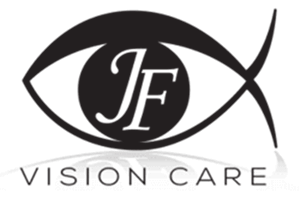When undetected, a vision problem can manifest in much the same ways as many, more popularly understood problems such as learning disorders, ADHD, and dyslexia. In turn, this may lead to misdiagnosis and subsequent frustration when treatment for that disorder is unsuccessful. With many children who suffer from a learning disorder, a vision problem may be the actual cause or may contribute to the problem.
Eyesight is a measure of how well a child can read letters at a given distance. Reading the “20 line” on an eye chart at 20 feet, for instance, translates into “20/20 eyesight.”
Vision is more complicated. It specifically refers to the health and abilities of the eyes themselves and how well they work. A child with good vision has strong eye movement control (including focusing and tracking), good eye teaming skills (how well the eyes work together as a team), good eye-hand coordination, strong abilities in recognizing symbols and images, and skills in connecting those visual images with auditory and tactile signals (sounds and feeling).
None of us know exactly how others see, and especially children do not often recognize when some aspect of their vision is not “normal.” As a result, children with vision problems will often attempt to compensate for a vision problem through behavioral changes. For example, a child with reduced eye teaming skills may cover one eye when reading, giving preference to the “good” eye.

Some patients perceive print as doubled and sometimes moving as shown above. As you cannot compare how you see to what others see, people do not always complain when they seen things this way.
Dr. Judson tests a child’s visual system as well as his or her eyesight and can help diagnose any problems that can be corrected with vision therapy or specially-designed lenses.
The following symptoms may indicate that YOU or your CHILD has a VISION PROBLEM. If you observe one or more of these symptoms, we recommend a vision therapy consultation with Dr. Judson.
PHYSICAL CUES
- Red, sore or itching eyes
- Jerky eye movements
- One eye turns in or out
- Blurred or double vision
- Headaches, dizziness or nausea after reading
- Head tilting, closing, or blocking one eye when reading
- Excessive squinting, blinking, and/or closing of one eye
- Places head close to book while reading
- Poor visual/motor skills (“hand-eye coordination”)
- Problems moving in space, frequently bumps into things or drops things, is “clumsy”
- Difficulties catching and/or throwing airborne objects
- Appears to favor the use of one eye
PERFORMANCE CLUES
- Avoidance of near work
- Frequent loss of place
- Omits, inserts or rereads letters/words/sentences
- Confuses similar looking words
- Failure to recognize the same word in the next sentence
BEHAVIOR-RELATED
- Short attention span
- Nervous, irritable, or quickly fatigued while reading, looking at books, or doing close work
- Displays signs of emotional or developmental immaturity
- Low frustration level, doesn’t get along well with others
- Experiences blurry vision
- Nausea or dizziness
- Motion sickness
- Double vision
WORK SKILLS
- Repeatedly confuses left and right directions
- Holds the book or object unusually close
- Twists or tilts head toward a book or object to favor one eye
- Frequently loses place when reading or copying from the board or paper
- Difficulty remembering what was read
- Difficulty remembering, identifying and reproducing geometric shapes
- Often reverses words
- Uses finger to read
- Rubs eyes during or after short periods of reading
- Frequently skips words and/or has to re-read
- Repeatedly omits small words
- Struggles with handwriting
- Moves head back and forth (instead of moving eyes)
SECONDARY SYMPTOMS
- Smart in everything but school
- Low self-esteem, poor self image
- Temper flare-ups , aggressiveness
- Frequent crying
- Short Attention Span
- Irritability
- Day Dreaming
LABELED
- Lazy
- Dyslexic
- Attention Deficit Disorder
- Slow learner
- Behavioral problem
- Juvenile delinquent
- Working below potential
See the Vision Quiz to further assess your visual symptoms.
Vision in Infants & Preschoolers Treated By Our Vision Therapy Expert in Terre Haute
Vision problems can start at a very early age. At a very early age, you can start noticing signs of vision problems in a child. Just like any preventative care, the sooner you spot difficulties, the easier it will be to improve your child’s vision as he/she begins to read and encounter other learning-related activities.
- Appearance of the eyes: The eyes should have a normal appearance. When children are very young, their eyes may occasionally turn in toward their nose. This is a typical behavior. If you notice the condition persisting, you should speak with your optometrist.
- Evidence of discomfort: It is difficult for a baby or a very young child to tell you they are experiencing discomfort. However, if a baby keeps his or her eyes closed during wakeful moments it may be a sign they’re experiencing some discomfort because it may feel better for them to keep their eyes closed.
- Attention span: Visual attention, such as a baby’s recognition of his or her parents entering the room, is an indicator of early development of visual abilities.
- Visual scanning: A child should be able to move his or her eyes quickly and accurately without excessive head movement. This ability is closely related to reading.
- Orientation and localization: As a baby learns to hold his or her eyes on an object, he or she will begin to scan for specific details. This is part of their growing visual awareness of their surroundings. They are now becoming oriented to the world around them.
Feel free to complete the Infant and Toddler Vision Development Checklist to assess the vision development of your child.
